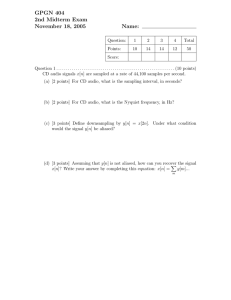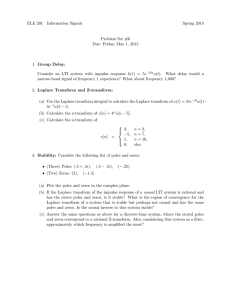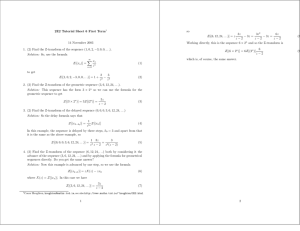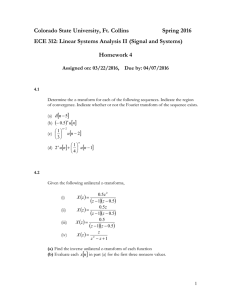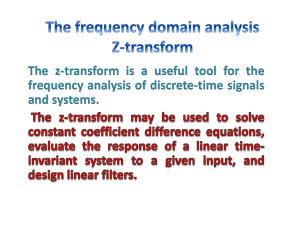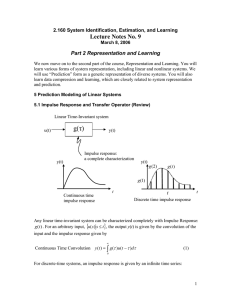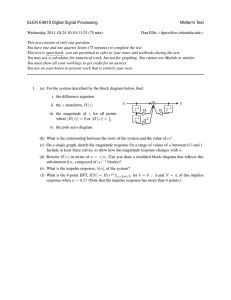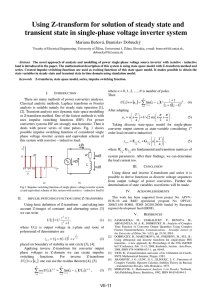Math 267, Section 202 : HW 10
advertisement
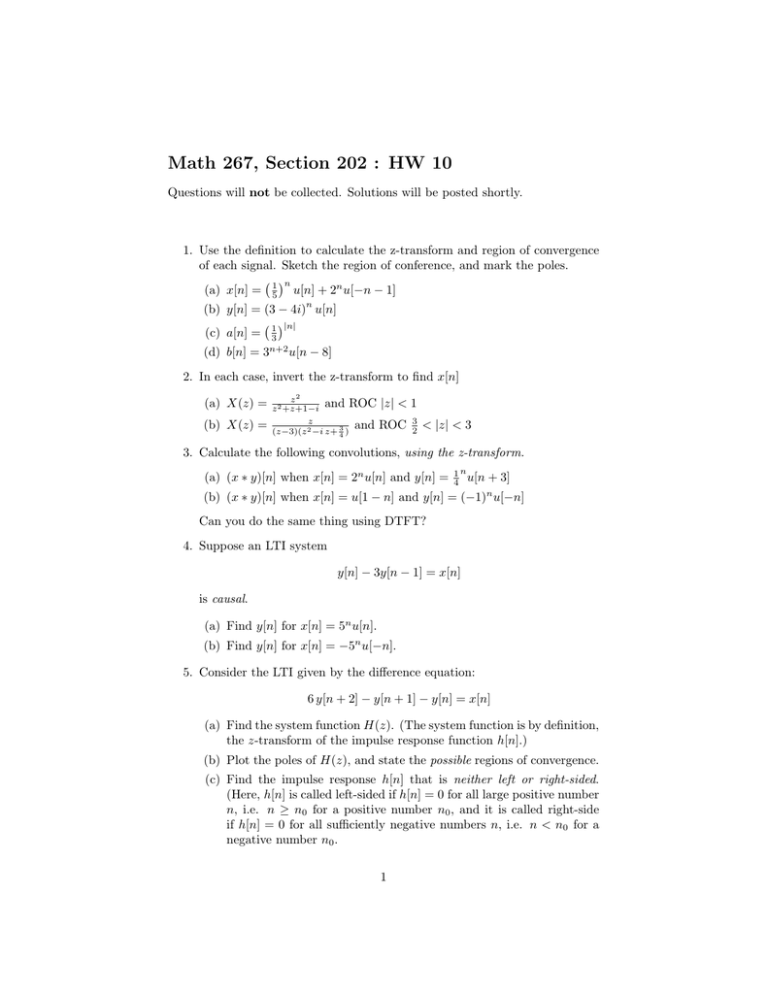
Math 267, Section 202 : HW 10 Questions will not be collected. Solutions will be posted shortly. 1. Use the definition to calculate the z-transform and region of convergence of each signal. Sketch the region of conference, and mark the poles. n (a) x[n] = 15 u[n] + 2n u[−n − 1] n (b) y[n] = (3 − 4i) u[n] |n| (c) a[n] = 13 (d) b[n] = 3n+2 u[n − 8] 2. In each case, invert the z-transform to find x[n] (a) X(z) = (b) X(z) = z2 z 2 +z+1−i and ROC |z| < 1 z and ROC 23 (z−3)(z 2 −i z+ 43 ) < |z| < 3 3. Calculate the following convolutions, using the z-transform. (a) (x ∗ y)[n] when x[n] = 2n u[n] and y[n] = 1n 4 u[n + 3] n (b) (x ∗ y)[n] when x[n] = u[1 − n] and y[n] = (−1) u[−n] Can you do the same thing using DTFT? 4. Suppose an LTI system y[n] − 3y[n − 1] = x[n] is causal. (a) Find y[n] for x[n] = 5n u[n]. (b) Find y[n] for x[n] = −5n u[−n]. 5. Consider the LTI given by the difference equation: 6 y[n + 2] − y[n + 1] − y[n] = x[n] (a) Find the system function H(z). (The system function is by definition, the z-transform of the impulse response function h[n].) (b) Plot the poles of H(z), and state the possible regions of convergence. (c) Find the impulse response h[n] that is neither left or right-sided. (Here, h[n] is called left-sided if h[n] = 0 for all large positive number n, i.e. n ≥ n0 for a positive number n0 , and it is called right-side if h[n] = 0 for all sufficiently negative numbers n, i.e. n < n0 for a negative number n0 . 1 (d) When the impulse response function h[n] is given from part(c), calculate the output for the input x[n] = u[n + 4] − u[n]. 6. Consider the LTI given by the difference equation: y[n + 1] − 2y[n] + y[n − 1] = i y[n − 1] + x[n + 1] (a) Find the system function H(z). (The system function is by definition, the z-transform of the impulse response function h[n].) (b) Plot the poles of H(z), and state the possible regions of convergence. (c) Find the impulse response h[n] that makes the LTI causal. (d) Calculate the output when x[n] = δ−1 [n] + δ2 [n] 2


